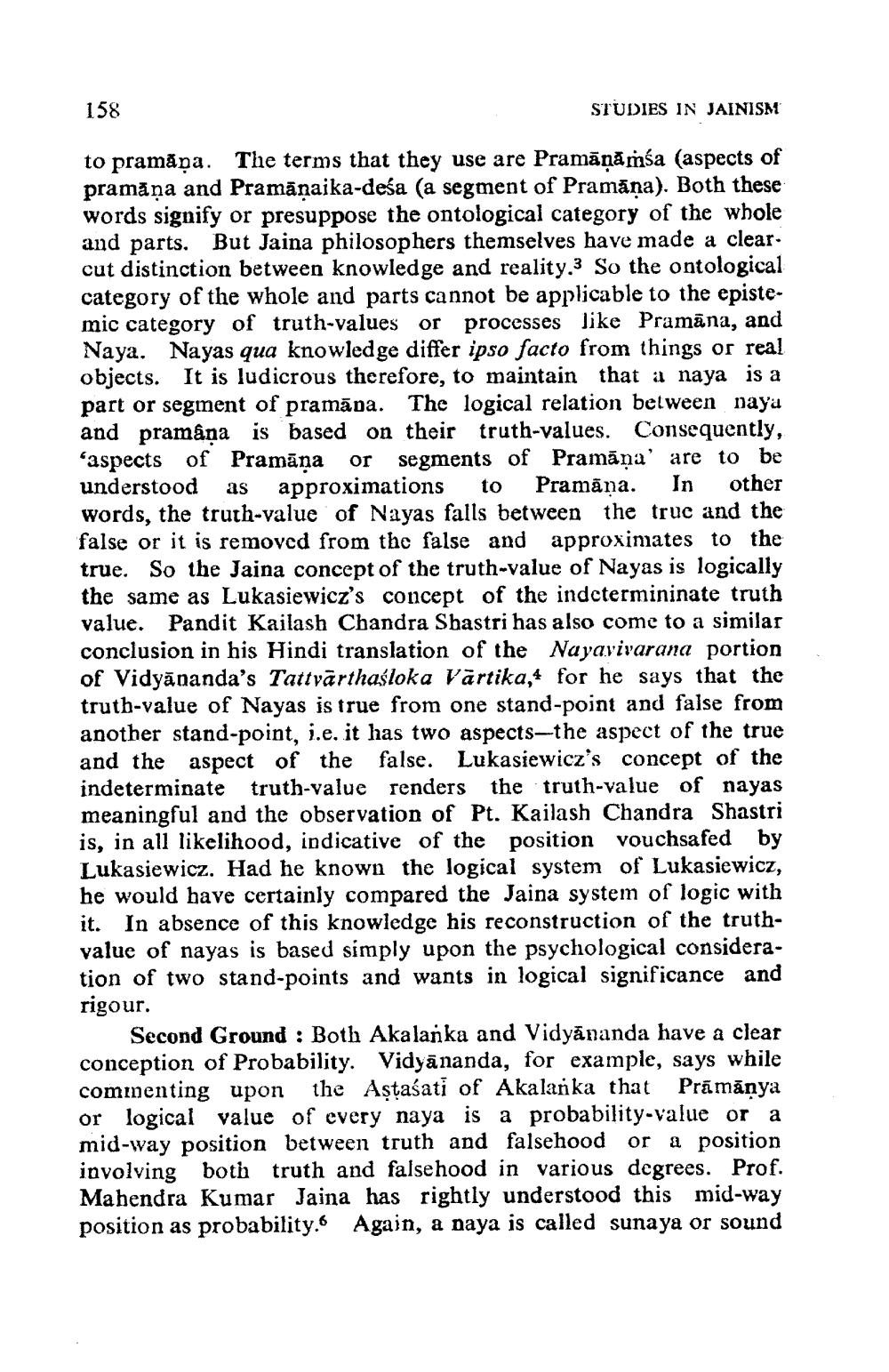________________
158
STUDIES IN JAINISM
to pramåpa. The terms that they use are Pramāņāmía (aspects of pramāṇa and Pramānaika-deśa (a segment of Pramāna). Both these words signify or presuppose the ontological category of the whole and parts. But Jaina philosophers themselves have made a clear. cut distinction between knowledge and reality.3 So the ontological category of the whole and parts cannot be applicable to the epistemic category of truth-values or processes like Pramāna, and Naya. Nayas qua knowledge differ ipso facto from things or real objects. It is ludicrous therefore, to maintain that a naya is a part or segment of pramāpa. The logical relation betwee and pramâņa is based on their truth-values. Consequently, 'aspects of Pramāņa or segments of Pramāņa' are to be understood as approximations to Pramāna. In other words, the truth-value of Nayas falls between the true and the false or it is removed from the false and approximates to the true. So the Jaina concept of the truth-value of Nayas is logically the same as Lukasiewicz's concept of the indetermininate truth value. Pandit Kailash Chandra Shastri has also come to a similar conclusion in his Hindi translation of the Nayavivarana portion of Vidyānanda's Tattvārthaíloka Vārtika,4 for he says that the truth-value of Nayas is true from one stand-point and false from another stand-point, i.e. it has two aspects-the aspect of the true and the aspect of the false. Lukasiewicz's concept of indeterminate truth-value renders the truth-value of nayas meaningful and the observation of Pt. Kailash Chandra Shastri is, in all likelihood, indicative of the position vouchsafed by Lukasiewicz. Had he known the logical system of Lukasiewicz, he would have certainly compared the Jaina system of logic with it. In absence of this knowledge his reconstruction of the truthvalue of nayas is based simply upon the psychological consideration of two stand-points and wants in logical significance and rigour.
Second Ground : Both Akalanka and Vidyānanda have a clear conception of Probability. Vidyānanda, for example, says while commenting upon the Aştaśati of Akalanka that Prāmānya or logical value of every naya is a probability-value or a mid-way position between truth and falsehood or a position involving both truth and falsehood in various degrees. Prof. Mahendra Kumar Jaina has rightly understood this mid-way position as probability. Again, a naya is called sunaya or sound




